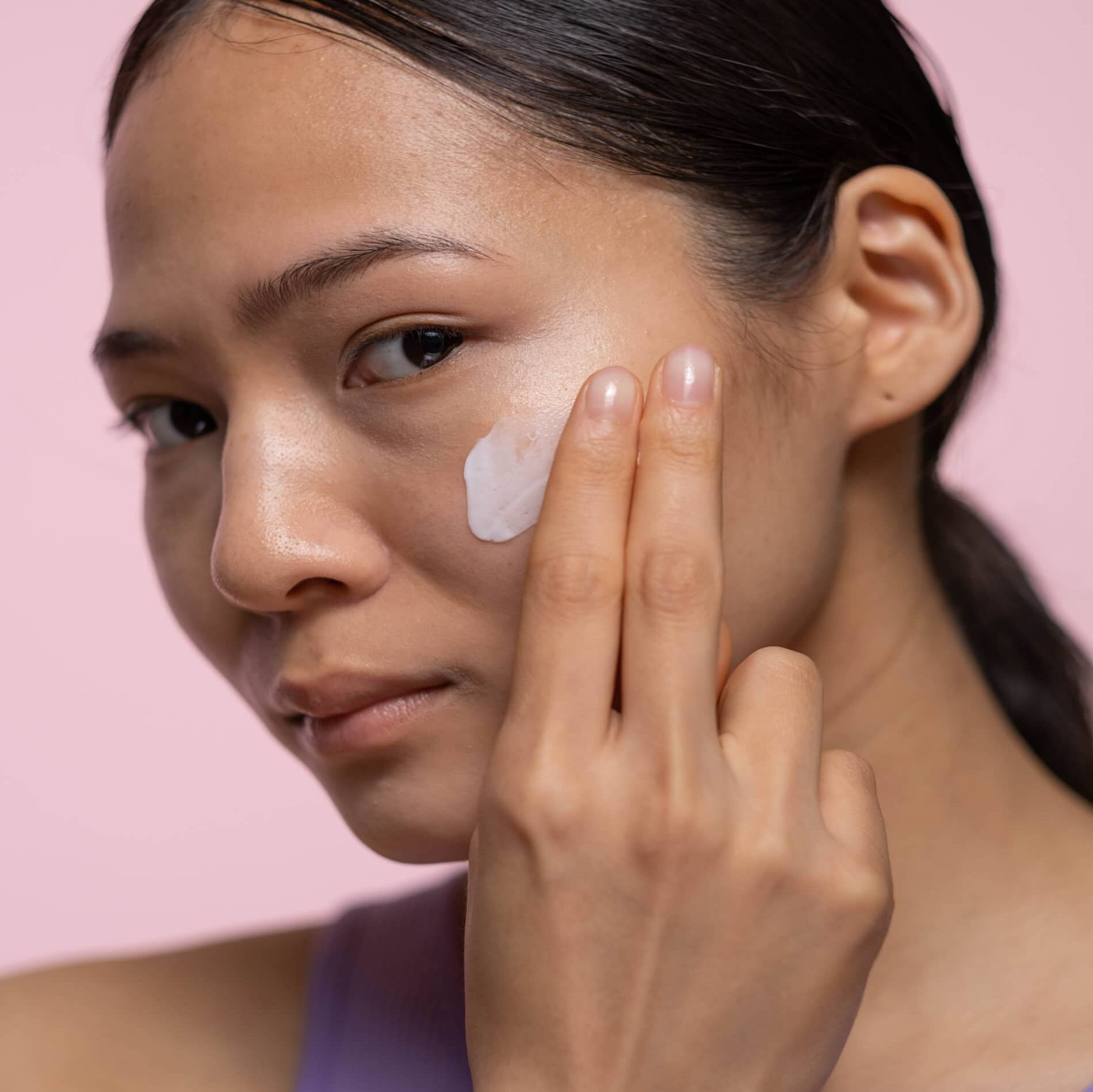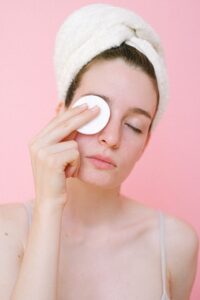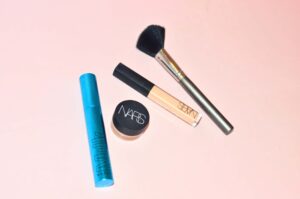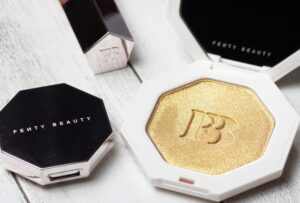On a daily basis, we’re exposed to a bunch of information for it to just light up our inner dialogues, and -as we’ve all been there- it gets very overwhelming. Now think of this but in a skincare setting. Considering all the skincare products out there, might we accidentally be hurting, instead of nurturing our skin barriers?
With the great number of skincare products that exist out there, there comes great risk. That’s if you don’t pay attention to your skin’s unique preferences and responses. And that’s where skin cycling, a routine of using skincare products wisely, in terms of keeping it simple, comes in.


What is Skin Cycling?
Skin cycling, the epitome of astonishing skin results, was first introduced as a concept by Dr. Whitney Bowe in a very educative TikTok video. Ever since, the word spread rapidly (as per usual, considering it’s TikTok) and everyone lived happily ever after.
No, but really, the great revelation of skin cycling is the four-night routine millions of people spent ages looking for. This routine raises the consciousness of how impactful any kind of skincare product might be in the long run.
Consisting of a full four-night bedtime trial, skin cycling emphasizes the reaction of the skin toward the products. The first night includes exfoliating, on the second night you should focus on retinoids, and then, on nights three and four, recovery is the way to go. Below you’ll find an in-depth step-by-step guide on skin cycling.
The Skin Cycling Routine
Night One
On the first night of the skin cycling technique, the attention is on the exfoliating acids.
After gently cleansing and drying your skin you would pick your typical best exfoliating product you own and put it on. As dr. Bowe suggests, a leave-on exfoliating product would be more of a great choice than a wash-off product. In case the product causes irritation or any other unpleasant feeling, you should wash it off right away, although any sensation of tickling is just okay and bearable.
The last step to be followed is putting on moisturizer and calling it a night.
What is exfoliation?
Whenever you hear of exfoliating, think of a snake shedding its skin. Exfoliating helps with removing dead skin cells and replacing them with new cells approximately every 30 days.
Night Two
Skin cycling is quite a ride. The second night is all about retinoids – the roller coaster encounter of the skincare realm.
Primary to using the retinoids, you cleanse and then pat dry the face, neck, and chest. Assuming that your skin is sensitive and might be prone to irritation, you should be using a moisturizer before applying the retinoid so it gives the skin that extra hydration and layer of protection.
To clarify that only a small amount of cream should be applied to the face, you can modify the sentence as follows:
- In skin cycling, it is crucial to remember that the universal protocol of quality over quantity extends to the application of skincare products. When practicing skin cycling, a single dot-sized amount of cream on the face is all that’s needed to achieve optimal results.
If even after 1 or 2 minutes you feel your skin being still dry, you can apply moisturizer all over again to set things straight – a method dr. Bowe refers to as ‘the sandwich technique’.
Retinoids have been creating a buzz for a while now. It almost seems like retinoids are elixirs dropped out of heaven gates, and that’s because such products have been treating wrinkles, and acne and also they’re known for boosting collagen. With the multiple benefits a retinoid product can come through, it is very important to know that high-retinoid concentration products should be only used when prescripted.
The skin can be very sensitive to these vitamin A-rich products, so it’s always better to be safe when introducing the skin to such products because retinoids can cause irritation and dryness – especially if you’re new to all of this.
Nights Three and Four
The sweet, sweet advantages of break times. On these nights of the skin cycling routine, you make sure you’re giving your skin a break from all the active ingredients that have been going on for the last two days. The skin must rest from whatever product that’s supposed to cause any kind of ‘pressure’. Even so, products such as hyaluronic acid, a good moisturizer, or hydrating serum wouldn’t be a threat to your skin’s vacations either.
Subscribe to our newsletter:
Thanks for signing up.
Is Skin Cycling Safe for Everyone?
Skin cycling doesn’t really have any side effects, but as good of a treatment as it may be – it may not be for everyone. That’s because one piece of a retinoid or exfoliation cream/product may not do its thing if your skin type is highly resistant and tolerant when exposed to such ingredients.
While it’s always better to consult with your dermatologist, skin cycling might not be enough for some, and just the right call for others who tend to have sensitive skin.
Although, you should always listen closely to how your skin’s responding to the active ingredients.
Skin Cycling Results
Great notice should be given to the consistency you apply to the routine.
As claimed by dr. Bowe, practicing your skin cycling routine will have you start seeing your skin blotchiness, or sensitivity will start and get better, just after 2 cycles.
As there is no rule on how long or how often you should practice skin cycling, you might want to stick to this routine, and just see the overall skin glow you’ll witness.
All in all, skin cycling products can be personalized depending on your skin’s dermatologist’s suggestion. And more like anyone else, you know your skin better.
Skin cycling is something you should give a try since no matter how fancy the term may sound, a rational thought around such a technique has been around for a while.
Maybe it hasn’t had a particular name, but it has always been advised to slow down on the new products (emphasis on active ingredients) and their impact.
Skin cycling can be looked at as a -minor setback for a major comeback- point of view. While we let everything breathe, we’re preparing for the major glow skincare momentum that’s about to come.



